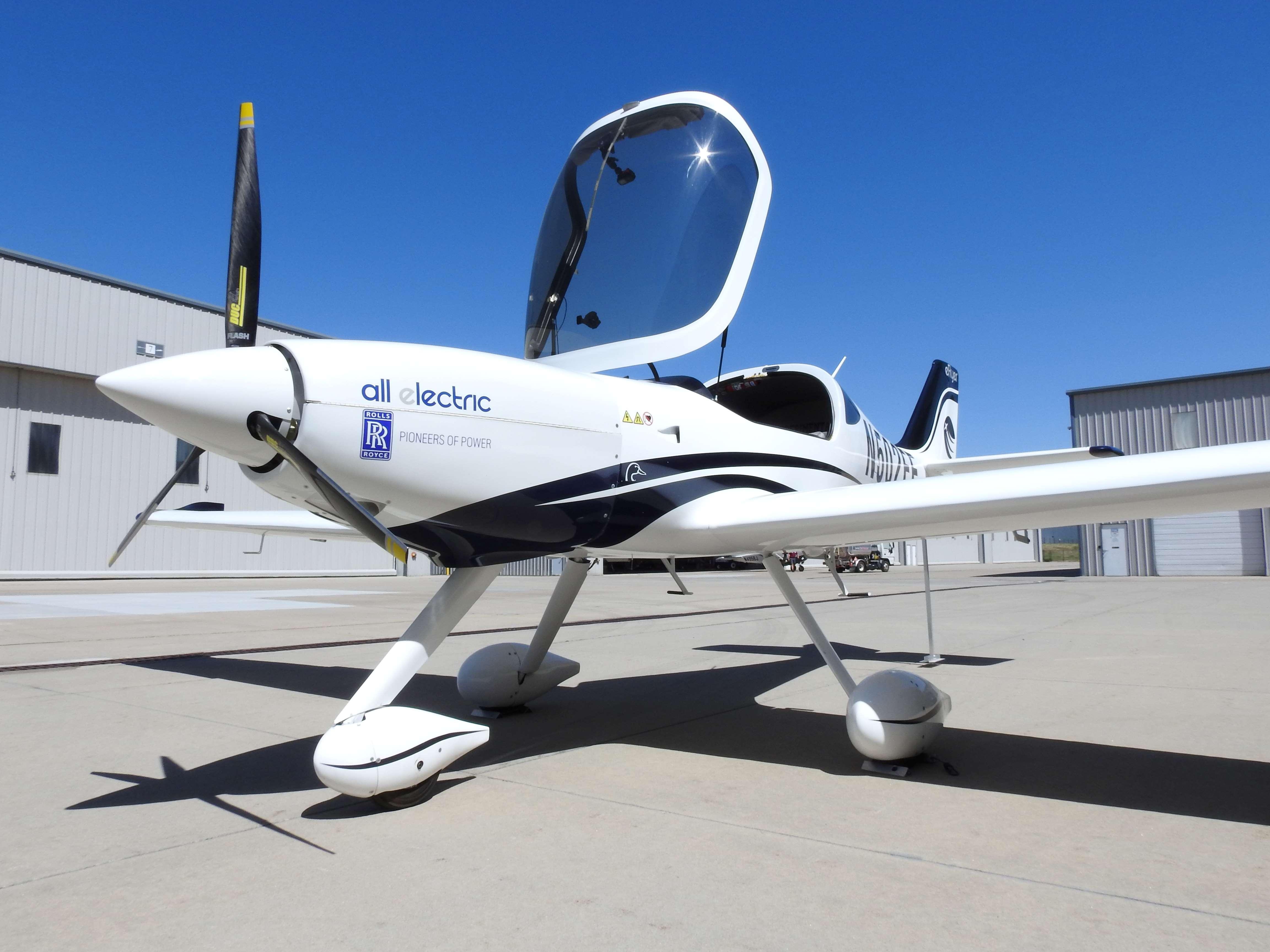
Rolls-Royce is progressing toward commercial certified electric propulsion across a range of system architectures and power outputs.
At the lower end, certification work has started with U.S. and European authorities on the 70-kW RRP70D general aviation propulsion system. At the upper end, Rolls has begun the design of a megawatt-scale propulsion system for commercial aircraft.
The initial application of the RRP70D is Bye Aerospace’s eFlyer 2 two-seat trainer, which is planned to be certified in 2021. After being halted by COVID-19, flights of Bye’s technology demonstrator have resumed and are focused on selecting a propeller.
Rolls is continuing to work with Airbus as it flight tests the CityAirbus electric vertical-takeoff-and-landing aircraft, which has eight 200-kW RRP200Ds driving four coaxial shrouded rotors. The intent is to mature the technology to a commercial solution, Mike Mekhiche, deputy director of Rolls-Royce Electrical, told a June 25 webinar organized by ZeroAvia.
Under the UK government-supported ACCEL program, Rolls is developing a sub-megawatt all-electric propulsion system and will attempt to break the speed record for electric aircraft. The program is advancing energy and power density in a lithium-ion battery system meeting DO-311 safety standards. The aircraft is expected to fly by year’s end, he said.
Separately, Rolls is developing a sub-megawatt hybrid-electric propulsion system for the APUS i-5 flight demonstrator funded by the Berlin/Brandenburg regional government in Germany. This will have a 700-kW propulsion system based on Rolls’ M250 helicopter turboshaft engine. The hybrid system is designed to work with batteries or hydrogen fuel cells.
“We are in flight-ready system design,” Mekhiche said. “We will complete flight-ready design by mid-2022 and the aircraft will fly in 2023. Later it will transition to precommercial design and certification.” The system is sized to power a commuter aircraft.
Rolls has also completed a 600-kW electric motor, the RRP600D, with testing planned to begin at the end of June. This system is large enough to power a turboprop regional airline such as the Dornier 228, Olaf Otto, Rolls director of customer business, told a June 25 webinar organized by Airtech Munich.
Rolls was also working with Airbus on the E-Fan X 2-megawatt serial hybrid-electric propulsion demonstrator. Although the companies decided not to take the testbed to flight, Rolls plans to continue to mature the technology and perform a ground test, Mekhiche said.
Lessons learned will lead to faster development of megawatt-scale electric propulsion systems, he said. Building on E-Fan X, Rolls has begun design of a megawatt-class, tackling challenges such as power electronics, corona discharge at altitude and thermal management in a certifiable design.
Rolls is also transitioning more electric engine technology developed under a UK-funded research program. This demonstrated a starter/generator integrated into an Adour military turbofan–one on the high-pressure spool and one of the low-pressure spool.
The technology can be used in an electrified turbine engine that also features battery energy storage and systems for energy management, thermal management and overall control. Electrification would remove hydraulic and mechanical systems, to improve efficiency and provide a way to manage engine cycle by adding or removing power.
‘The program is transitioning into another application with a clear path to a fully commercialized product,” Mekhiche said.





